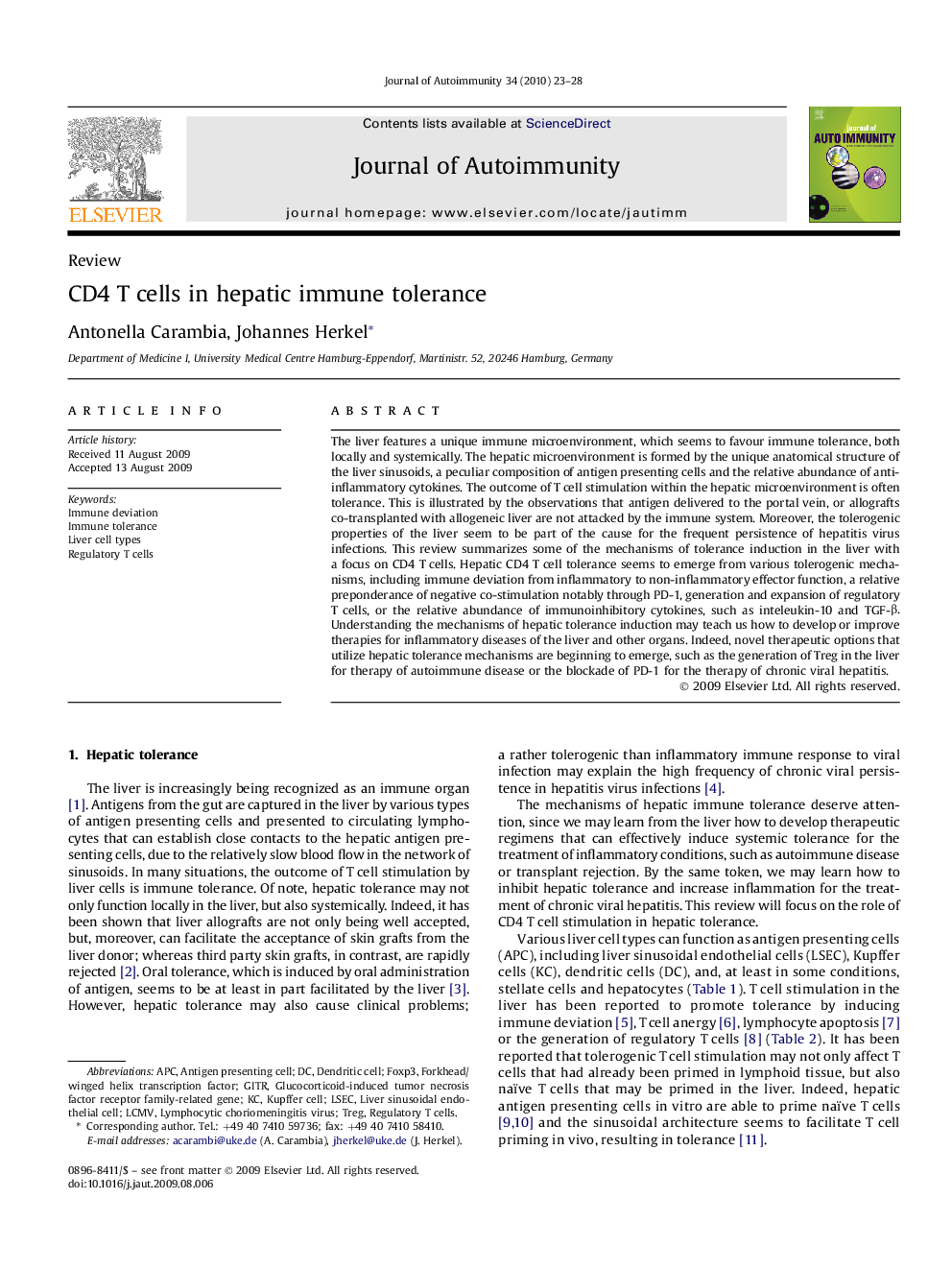| Article ID | Journal | Published Year | Pages | File Type |
|---|---|---|---|---|
| 3368032 | Journal of Autoimmunity | 2010 | 6 Pages |
The liver features a unique immune microenvironment, which seems to favour immune tolerance, both locally and systemically. The hepatic microenvironment is formed by the unique anatomical structure of the liver sinusoids, a peculiar composition of antigen presenting cells and the relative abundance of anti-inflammatory cytokines. The outcome of T cell stimulation within the hepatic microenvironment is often tolerance. This is illustrated by the observations that antigen delivered to the portal vein, or allografts co-transplanted with allogeneic liver are not attacked by the immune system. Moreover, the tolerogenic properties of the liver seem to be part of the cause for the frequent persistence of hepatitis virus infections. This review summarizes some of the mechanisms of tolerance induction in the liver with a focus on CD4 T cells. Hepatic CD4 T cell tolerance seems to emerge from various tolerogenic mechanisms, including immune deviation from inflammatory to non-inflammatory effector function, a relative preponderance of negative co-stimulation notably through PD-1, generation and expansion of regulatory T cells, or the relative abundance of immunoinhibitory cytokines, such as inteleukin-10 and TGF-β. Understanding the mechanisms of hepatic tolerance induction may teach us how to develop or improve therapies for inflammatory diseases of the liver and other organs. Indeed, novel therapeutic options that utilize hepatic tolerance mechanisms are beginning to emerge, such as the generation of Treg in the liver for therapy of autoimmune disease or the blockade of PD-1 for the therapy of chronic viral hepatitis.
